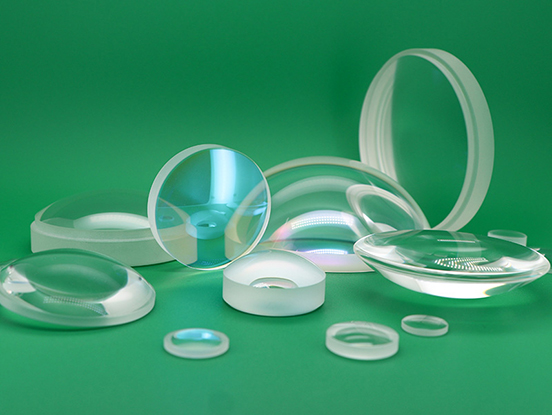Spherical Lenses for Optics: A Complete Guide
Aug. 19, 2025
A spherical lens is an optical lens with one or both surfaces shaped like a segment of a sphere. These lenses are common because they are easy to design, manufacture, and inspect. They are widely used in imaging, laser systems, microscopes, and other optical devices.

Applications of Spherical Lenses
Spherical lenses are used to converge or diverge light, forming smaller or larger images:
Cameras: Focus images onto small sensors for digital capture.
Microscopes: Magnify tiny objects for viewing.
Laser systems and measurement devices: Control light for precision applications.
Types of Spherical Lenses
Lenses are classified by surface curvature:
Plano-Concave (PCV): Flat + concave surface; diverges light.
Plano-Convex (PCX): Flat + convex surface; converges light.
Meniscus: Concave + convex; reduces spherical aberration.
Biconvex: Both surfaces convex; strongly converges light.
Biconcave: Both surfaces concave; diverges light.
Some lenses combine a spherical and a flat surface. Fully flat lenses are typically called optical windows.
How Spherical Lenses Are Made
Manufacturing usually involves:
Preform cutting or molding
Grinding to achieve precise curvature
Polishing for smooth, clear surfaces
Centering and edging to align optical and mechanical axes
Cleaning with ultrasonic machines
Coating to improve transmission and durability
Materials for Spherical Lenses
Lens material is chosen based on:
Refractive index and light behavior
Chromatic dispersion
Wavelength range (UV, visible, IR)
Thermal or environmental conditions
Common materials include optical glass, fused silica, plastics, and sapphire for high-stress applications.
Cost Factors
Spherical lens prices vary from less than one USD to several thousand USD per piece. Cost is influenced by:
Material: Glass vs. sapphire or germanium
Size: Very small or very large lenses are more expensive
Optical quality: Surface finish and polishing precision
Order quantity: Larger batches reduce unit cost
Coatings: Batch-applied coatings affect price
Key Specifications
Focal length: Distance where light converges or diverges; determines lens power
Concentricity: Alignment of optical and mechanical centers; critical in multi-lens systems
Conclusion
Spherical lenses are versatile, reliable, and widely used in optics. Correct material selection, surface quality, and concentricity are essential to achieve optimal performance in cameras, microscopes, laser systems, and industrial applications.





















